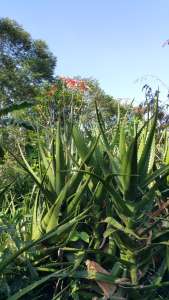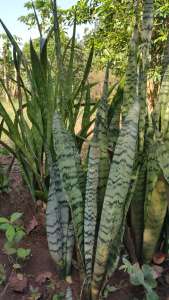SEEDS AND PROPAGATION MATERIAL
Seeds should be verified botanically, indicating genus, species, variety/cultivar/chemotype and origin and should be traceable. The same applies to vegetatively propagated medicinal plants. Seeds and/or vegetatively propagated medicinal plants used in organic production have to be certified as organic. The starting material should be as free as possible from pests and diseases in order to guarantee healthy plant growth. Species resistant or tolerant to disease should preferably be used. The presence of different species, varieties or different plant parts has to be controlled during the entire production process, and such adulteration should be avoided. The use of genetically modified medicinal plants or seeds must comply with regional and/or national regulation
CULTIVATION
 Different Standing Operating Procedures may be acceptable depending on whether conventional or organic methods of cultivation are employed. However, care should be taken to avoid any environmental impact. The principles of good crop husbandry must be followed including appropriate rotation of crops.
Different Standing Operating Procedures may be acceptable depending on whether conventional or organic methods of cultivation are employed. However, care should be taken to avoid any environmental impact. The principles of good crop husbandry must be followed including appropriate rotation of crops.
1. Soil and fertilisation
 Medicinal plants should not be grown in soil contaminated with sludge, heavy metals, residues, plant protection products or other chemicals etc. Any chemicals used in the growth or protection of the crop should be kept to a minimum. Manure applied should be thoroughly composted and should be void of human faeces. All other fertilising agents should be applied sparingly and in accordance with the needs of the particular species. Fertilisers should be applied in such a manner as to minimise leaching.
Medicinal plants should not be grown in soil contaminated with sludge, heavy metals, residues, plant protection products or other chemicals etc. Any chemicals used in the growth or protection of the crop should be kept to a minimum. Manure applied should be thoroughly composted and should be void of human faeces. All other fertilising agents should be applied sparingly and in accordance with the needs of the particular species. Fertilisers should be applied in such a manner as to minimise leaching.
2. Irrigation
Irrigation should be controlled and carried out according to the needs of the medicinal plant. Water used in irrigation should comply with regional/national quality standards.
3. Crop maintenance and plant protection.
Tillage should be adapted to plant growth and requirements. Pesticide and herbicide applications should be avoided as far as possible. When necessary approved plant protection products should be applied at the minimum effective level in accordance with the recommendations from the manufacturer and authorities. The application should be carried out only by qualified staff using approved equipment. The minimum interval between such treatment and harvest time must be stipulated by the buyer or be consistent with recommendations from the manufacturer of the plant protection product. Regional and/or national regulations on maximum residue limits in Uganda etc should be complied with.
COLLECTION
 Individuals should be designated to identify and verify collected medicinal plants/herbal drugs and to supervise collectors. Collection must be carried out in compliance with existing regional national and/or national species conservation legislation. Collection methods must not damage the growth environment ensuring optimum conditions for regeneration of the medicinal plant/herbal drug harvested. Medicinal plants/herbal drugs from species that are listed as endangered (CITES, Convention on International Trade in Endangered Species of Wild Fauna and Flora) must not be collected unless the relevant competent authority has given its authorisation.
Individuals should be designated to identify and verify collected medicinal plants/herbal drugs and to supervise collectors. Collection must be carried out in compliance with existing regional national and/or national species conservation legislation. Collection methods must not damage the growth environment ensuring optimum conditions for regeneration of the medicinal plant/herbal drug harvested. Medicinal plants/herbal drugs from species that are listed as endangered (CITES, Convention on International Trade in Endangered Species of Wild Fauna and Flora) must not be collected unless the relevant competent authority has given its authorisation.
HARVEST
Medicinal plants/herbal drugs should be harvested when they are of the best possible quality for the proposed use. Damaged plants or parts plants need to be excluded. Medicinal plants/herbal drugs should be harvested under the best possible conditions avoiding wet soil, dew, rain or exceptionally high air humidity. If harvesting occurs in wet conditions possible adverse effects on the medicinal plant/herbal drug due to increased moisture levels should be counteracted. Cutting devices or harvesters must be adjusted such that contamination from soil particles is reduced to a minimum. The harvested medicinal plant/herbal drug should not come into direct contact with the soil. It must be promptly collected and transported in dry, clean conditions. During harvesting, care should be taken to ensure that no toxic weeds mix with harvested medicinal plants/herbal drugs. All containers used during harvesting must be clean and free of contamination from previous harvests. When containers are not in use, they must be kept in dry conditions free of pests and inaccessible to mice/rodents, livestock and domestic animals. Mechanical damage and compacting of the harvested medicinal plant/herbal drug that would result in undesirable quality changes must be avoided. In this respect, attention must be paid to – overfilling of the sacks, – the stacking up of sacks. Freshly harvested medicinal plants/herbal drugs must be delivered as quickly as possible to the processing facility in order to prevent thermal degradation. The harvested crop must be protected from pests, mice/rodents, livestock and domestic animals. Any pest control measures taken should be documented.
